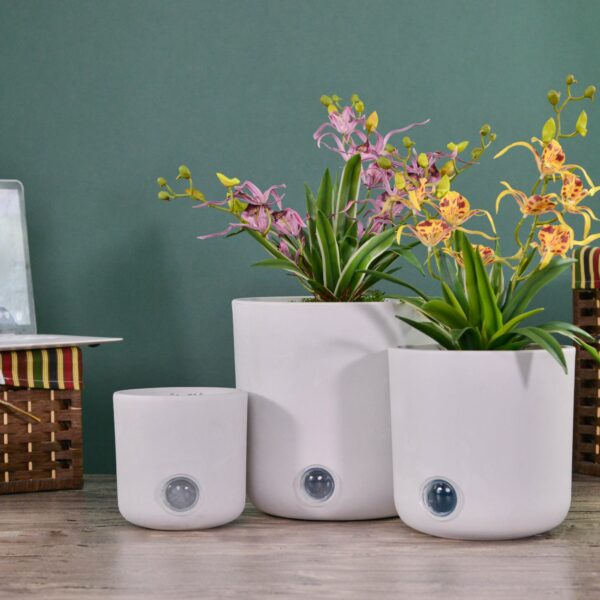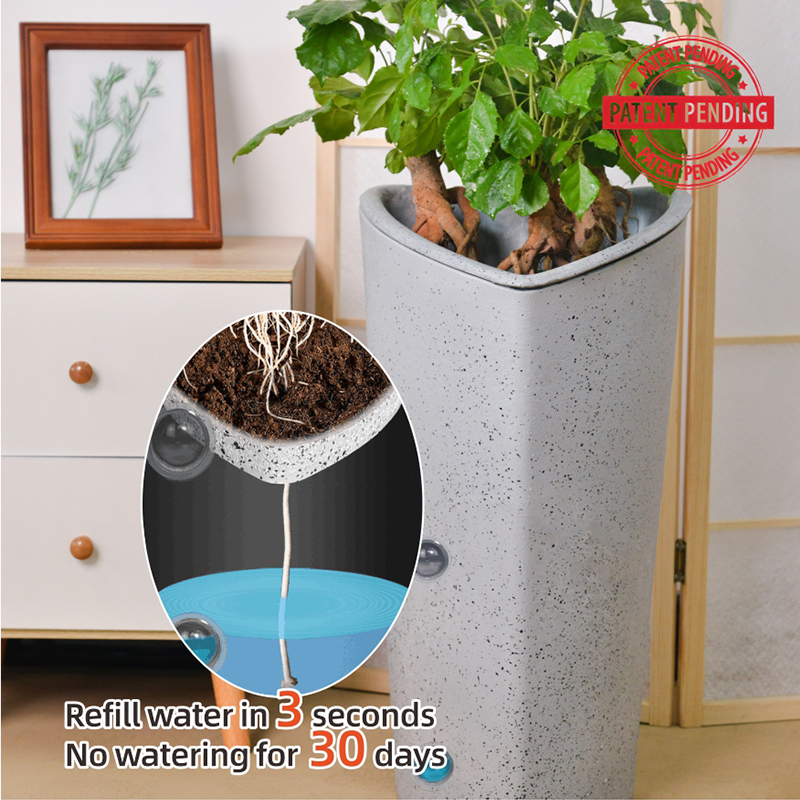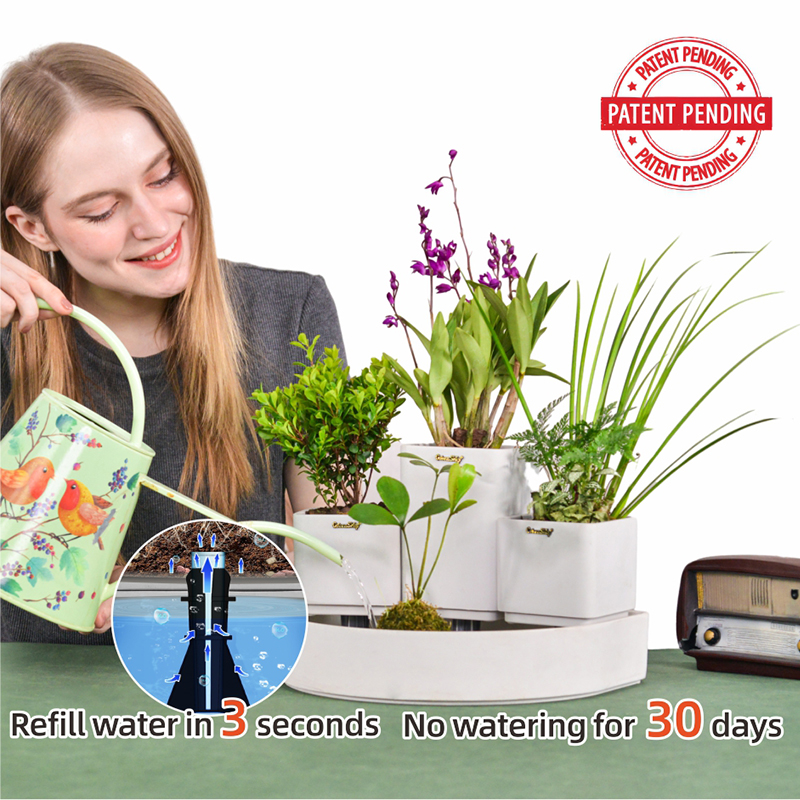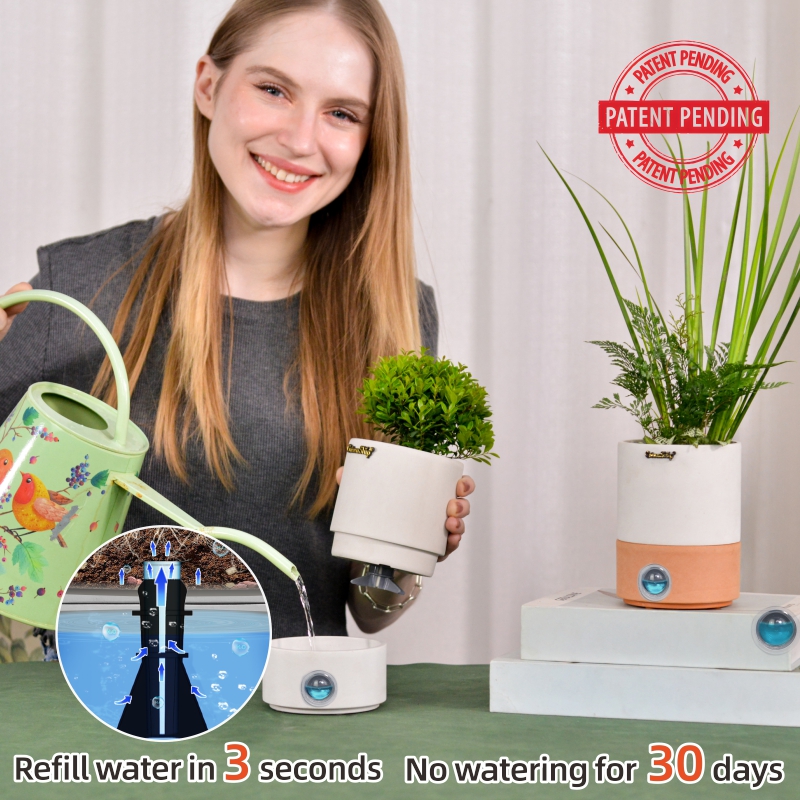Do Self-Watering Planters Cause Root Rot?
Self-watering planters are a convenient solution for plant care, providing consistent moisture to plants with less frequent watering. However, if not used correctly, they can increase the risk of root rot. Understanding the causes of root rot and how to prevent it is essential to maintaining healthy plants.
How Self-Watering Planters Can Contribute to Root Rot
- Overwatering:
- The continuous availability of water in the reservoir can lead to waterlogged soil if the planter is not monitored properly.
- Prolonged exposure to overly wet soil deprives roots of oxygen, creating conditions where root rot pathogens thrive.
- Poor Drainage:
- If the planter’s reservoir is poorly designed or lacks proper drainage mechanisms, water can stagnate.
- Stagnant water promotes bacterial and fungal growth, which can attack the plant’s roots.
- Lack of Aeration:
- Excessive moisture combined with insufficient airflow can suffocate the roots, reducing their ability to take in oxygen and nutrients.

Self-Watering Pots
Tips to Prevent Root Rot in Self-Watering Planters
- Choose the Right Plants:
- Select plants that prefer consistently moist soil, such as tropical plants, herbs, or certain vegetables.
- Avoid plants that thrive in dry or well-draining conditions, such as succulents or cacti.
- Monitor Water Levels:
- Fill the reservoir only to the recommended level specified by the manufacturer.
- Allow the reservoir to dry out periodically to avoid constant saturation.
- Ensure Proper Drainage:
- Check that the planter includes drainage holes to release excess water if the reservoir overfills.
- Avoid blocking drainage holes with soil or debris.
- Use Well-Draining Soil:
- Use a high-quality potting mix designed for container gardening. Such mixes are typically lightweight and contain materials like perlite or vermiculite to improve drainage.
- Regularly Check Soil Moisture:
- Use a moisture meter or your fingers to check the soil’s moisture levels. Refill the reservoir only when the soil begins to dry out slightly.
- Clean the Reservoir:
- Regularly clean the reservoir to prevent the buildup of algae, bacteria, or fungal spores.
- A clean reservoir ensures a healthier environment for the plant’s roots.

Benefits of Properly Used Self-Watering Planters
When used correctly, self-watering planters offer several advantages:
- Reduced Watering Frequency: The reservoir system minimizes the need for daily watering, making it ideal for busy plant owners or frequent travelers.
- Consistent Moisture Levels: Plants receive a steady supply of water, reducing stress caused by inconsistent watering.
- Healthier Root Systems: Properly managed self-watering planters encourage healthy root growth by delivering water directly to the roots.

Conclusion
While self-watering planters can potentially cause root rot if misused, the risk can be minimized by choosing appropriate plants, monitoring water levels, and ensuring proper drainage and soil aeration. By following these best practices, you can enjoy the convenience of self-watering planters while maintaining healthy, thriving plants.
11AB
By greenship|2024-03-26T01:17:01+00:00March 25, 2024|Categories: HomeOasis Self-Watering System|
23TB
By greenship|2024-03-26T01:15:31+00:00March 25, 2024|Categories: HomeOasis Self-Watering System|
16G12
By greenship|2024-03-26T01:16:38+00:00March 25, 2024|Categories: HomeOasis Self-Watering System|



